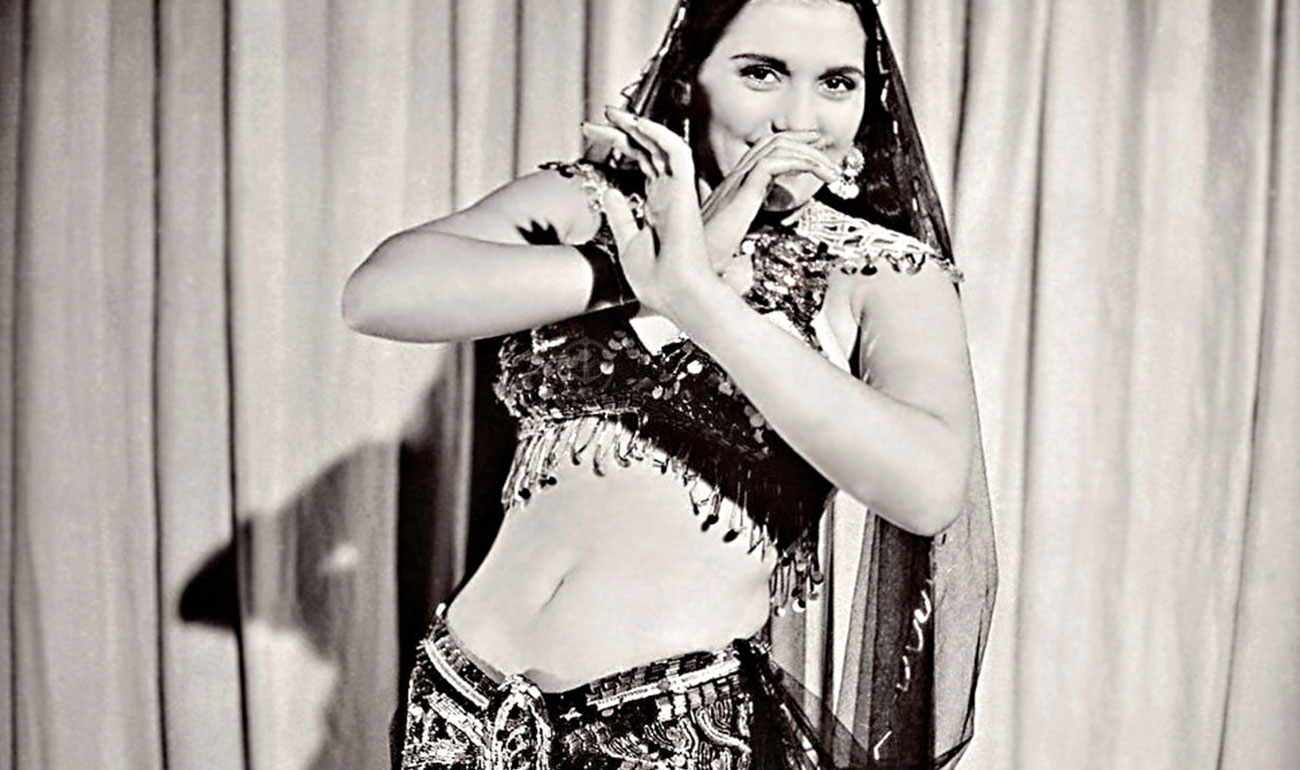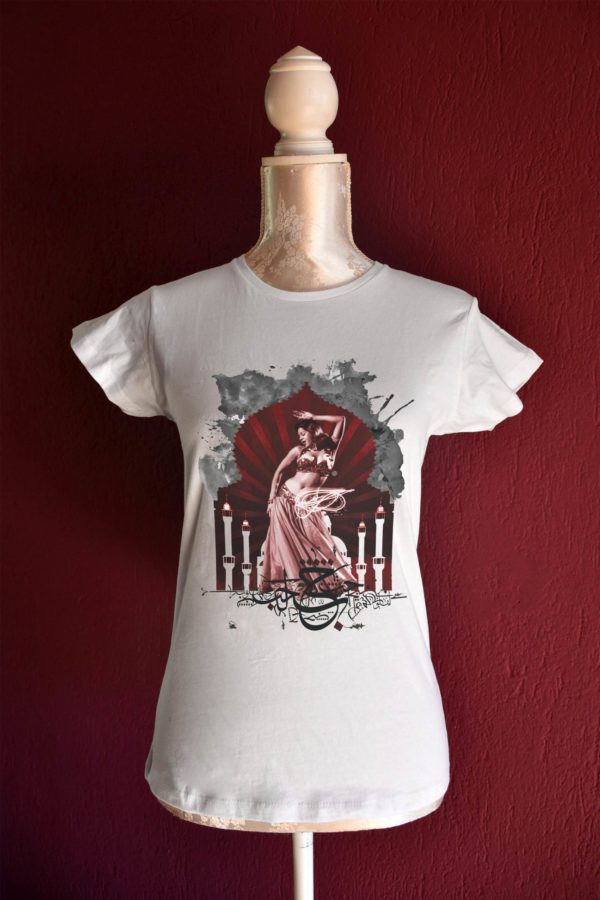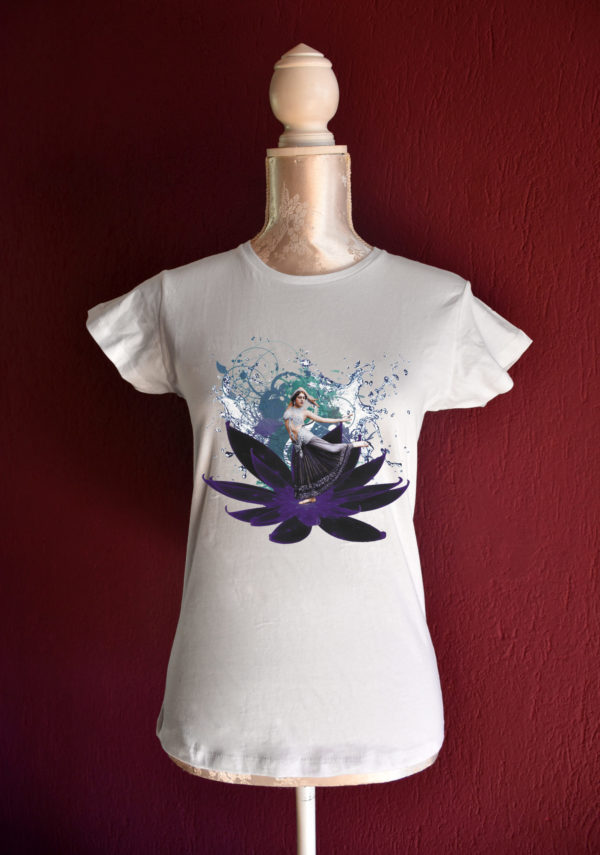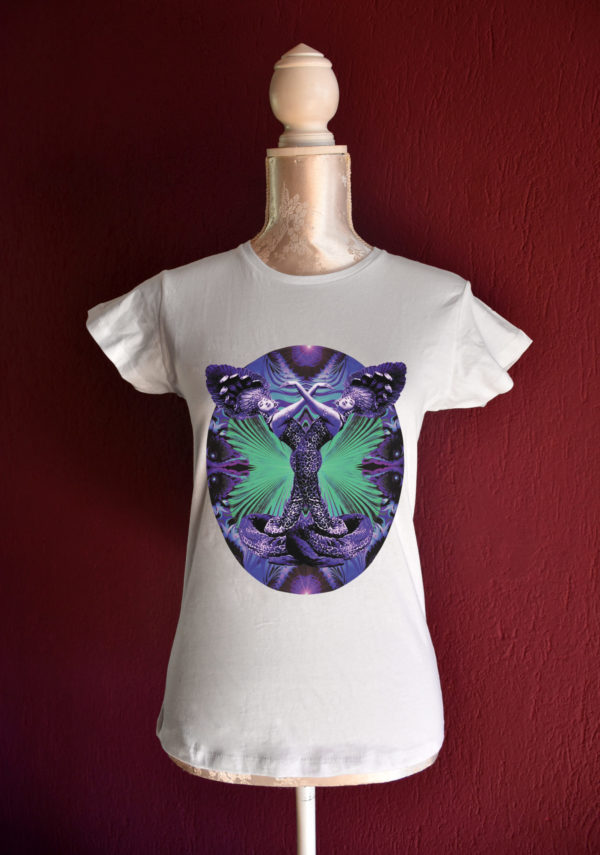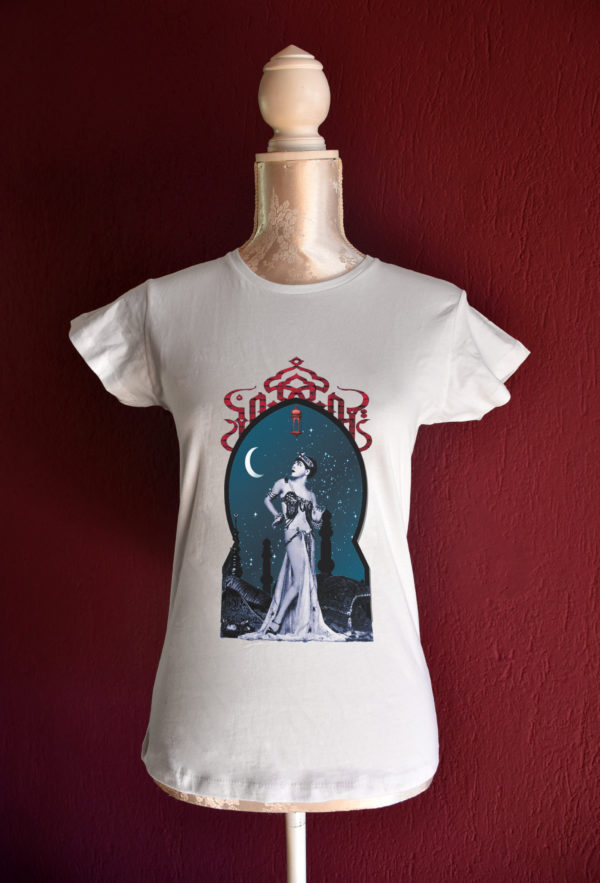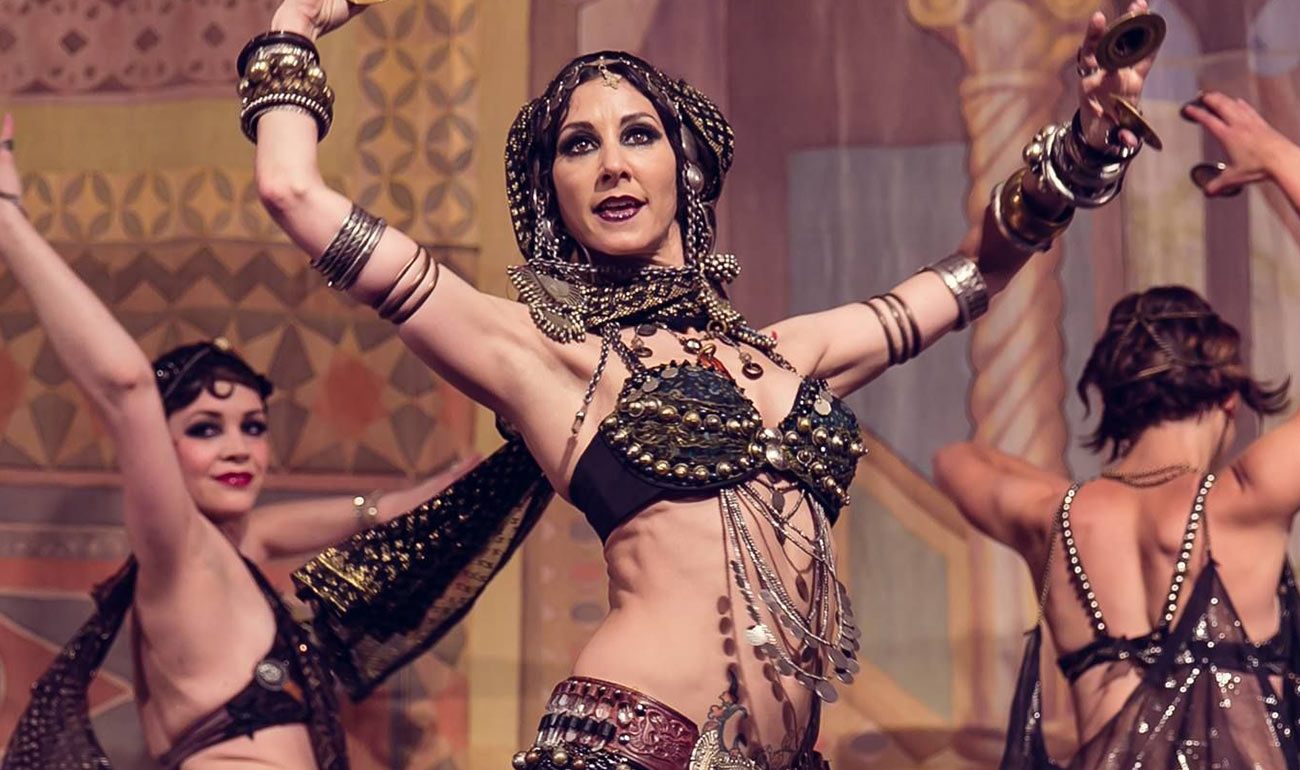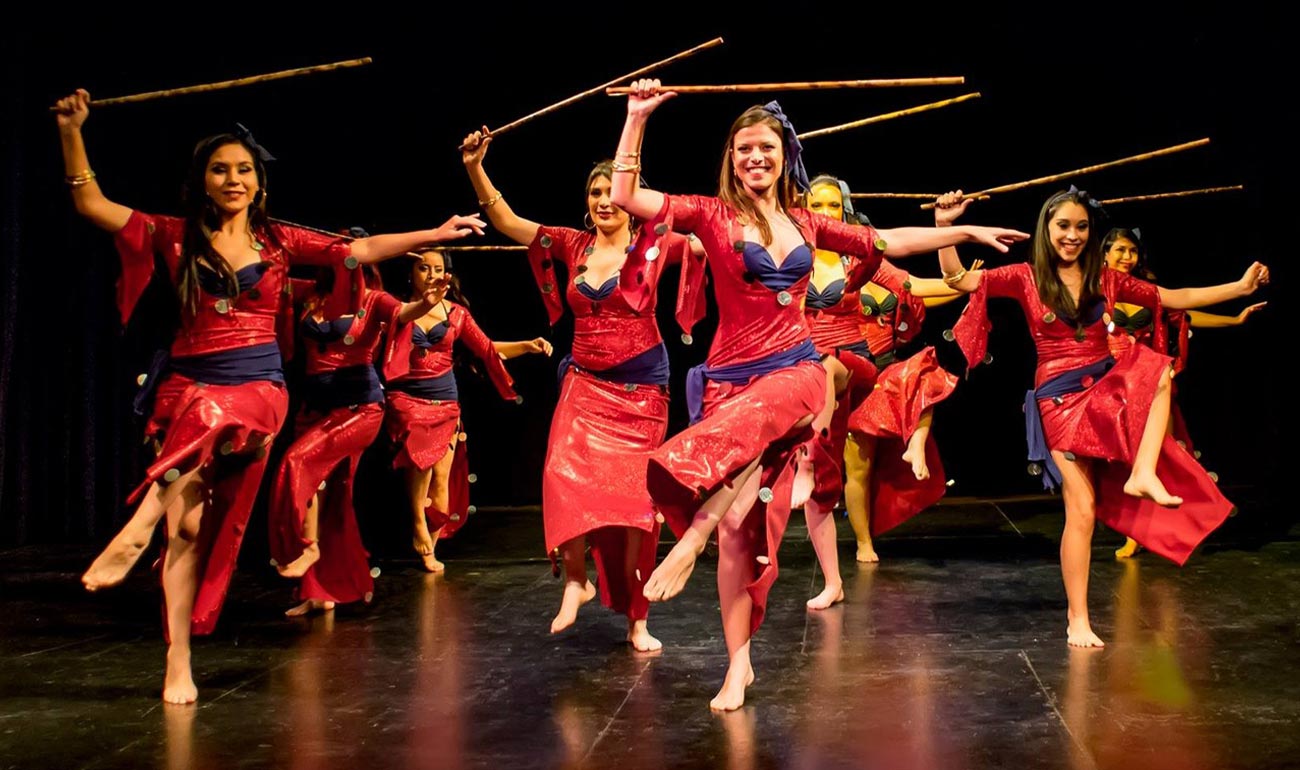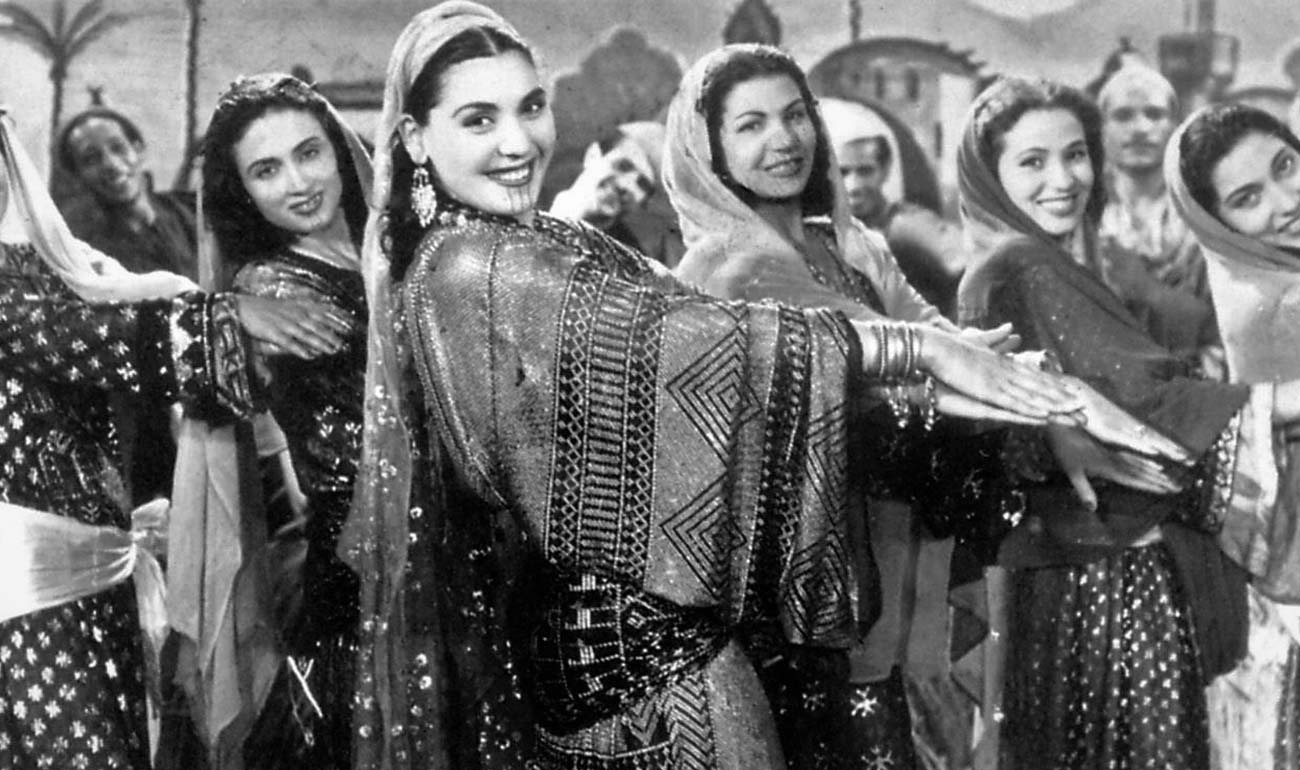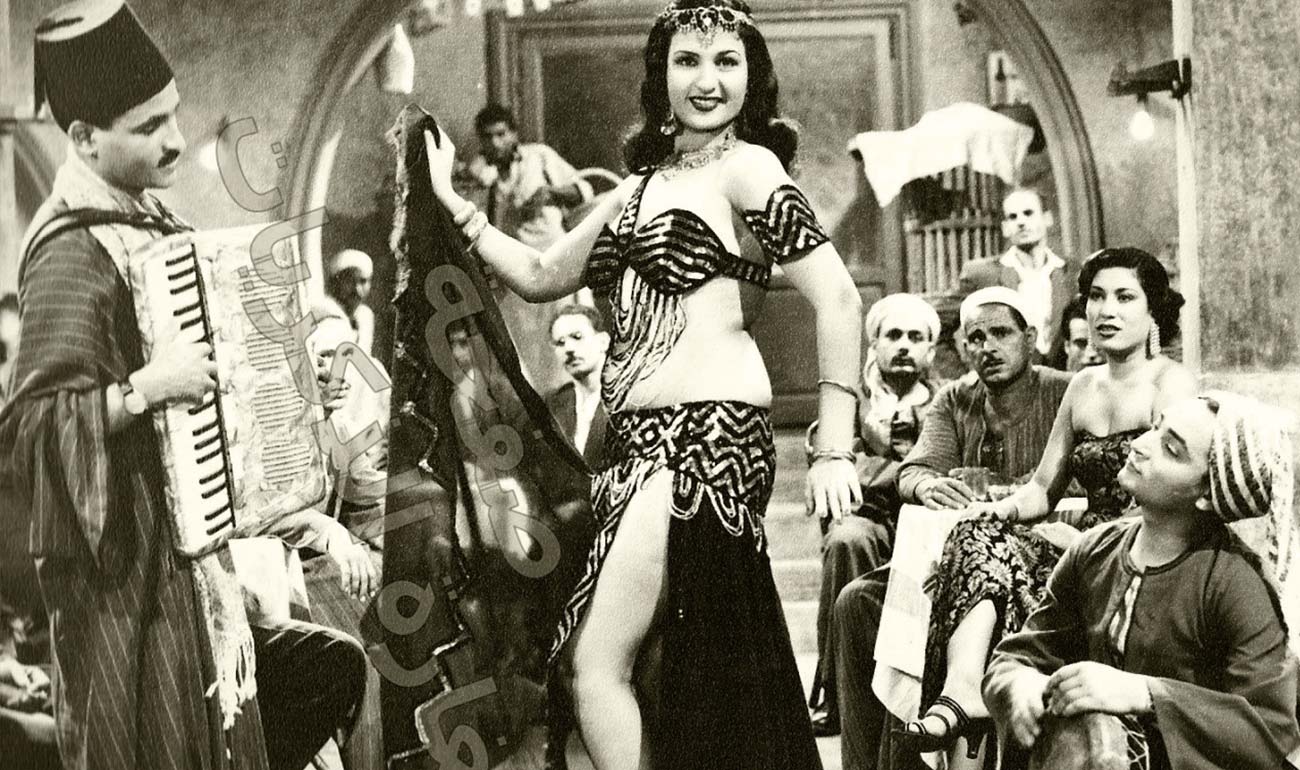
The “Golden Era” of Belly Dance
The term “golden era” is often used to refer to the period of Egyptian cinema that begins in the first half of the mid-20th century. During this period, many actresses and dancers became popular, not only in Egypt and the Middle East, but all over the world, thanks to what can be considered the matron of modern belly dancing: the Lebanese-born actress and dancer Badia Masabni.
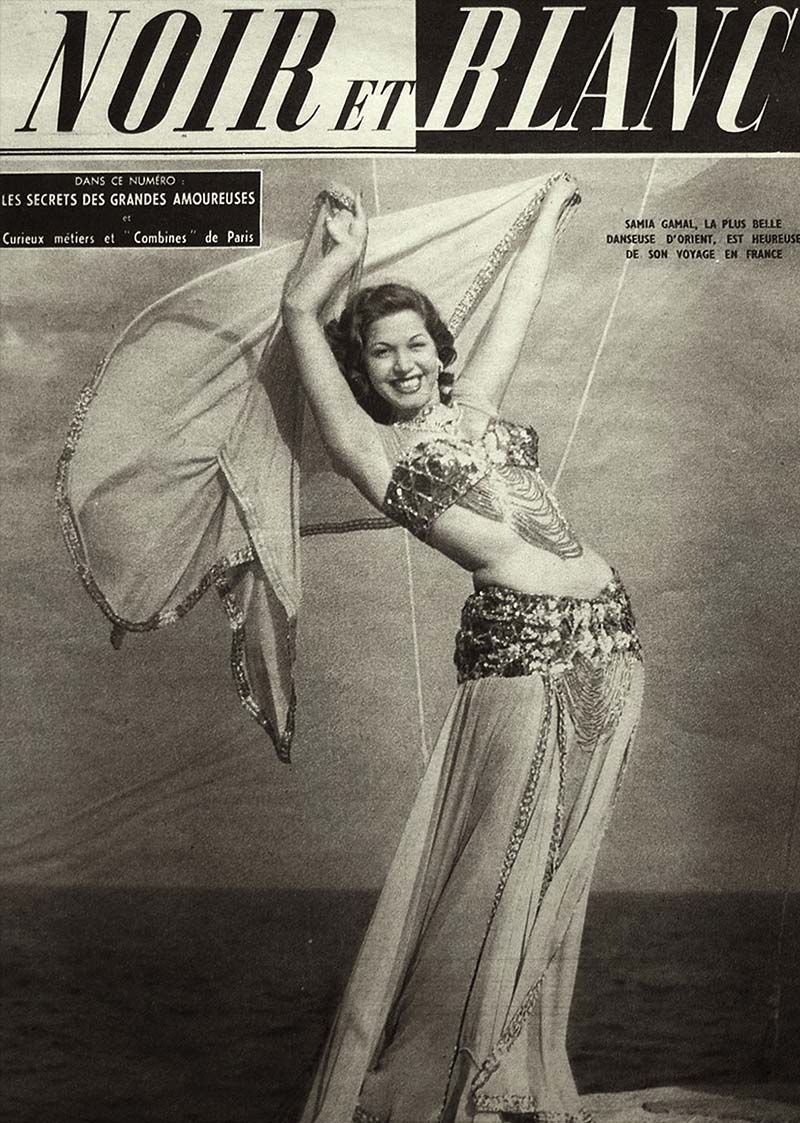
Samia Gamal
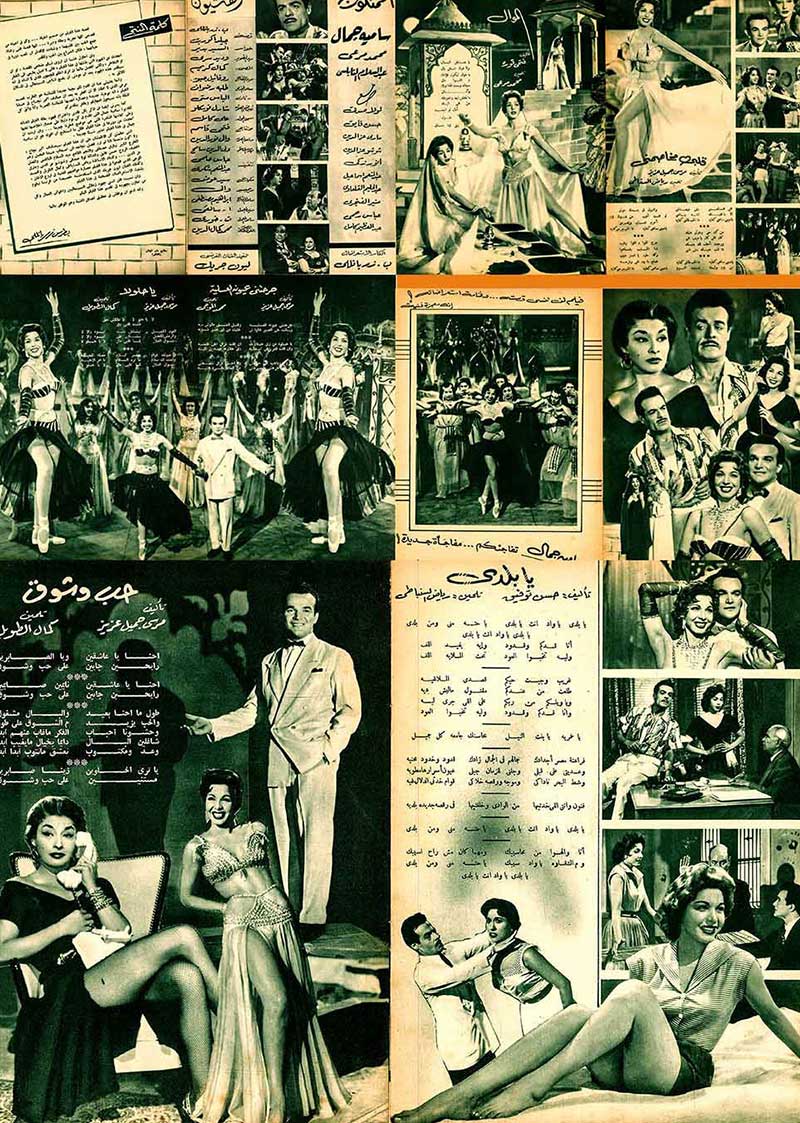
First love movie program (1956)
BADIA MASABNI CASINO OPERA
Badia was born in 1892 in Damascus, in the Ottoman Empire, to a Lebanese father and a Syrian mother. He moved to Cairo in the early twentieth century and played a central role in the history of Egyptian dance. At the beginning of the 1900s, Cairo was the center of industry and entertainment and in 1926 Badia opened the first Egyptian Music Hall, which he called “Casino Opera“, but which actually became famous as “Badia Casino” or “Cabaret Madame Badia“.
The venue offered a wide range of singing, dancing, and even comedy and magic shows. Its founder was inspired by the model of a western nightclub of the time, in an attempt to see Europeans as well as Arab travelers among the public. The casino was a huge success, and became a meeting point for good international society, frequented by nobles and personalities.
The casino became a launching pad for many actors and show business characters.
Thanks to Madame Badia, the art of oriental dance was brought to the stage, rising from the rank of folk or folk dance. With a stage at their disposal, the dancers could begin to use space and create choreographies, and Badia began to be inspired by classical dance and therefore to suggest that the arms, originally rather static, began to move more. Badia hired European and Russian classical dance teachers who had the task of enriching the dance of the professionals with the elegant steps and gestures of classical dance, who until then they would never have imagined going to dance class.
Shop some item inspired by Artemisia
THE DANCE
The presence of these western classical dance masters gave a completely new course to oriental dance, for better or for worse: on one hand the movements were better specified, they became more “complete” and codified, creating the basis of a dance technique, but on the other hand it was lost in spontaneity and many dancers slowly began to look like bad copies of western dancers, losing part of their interpretative personality. The elegance and impact strength of the dancer on stage was given not only by the impeccable costumes and hairstyles, but also by a precise stylistic figure which is the basic trace of the dance of this wonderful period. The dance was sparkling, sometimes fast, sometimes slow, with unexpected changes of speed and directions for the audience, but the dancer, even when she improvised, followed very precise compositional rules. Changes of poses, linked together by transitions and particular steps, many of which are now abandoned.
Furthermore, in the Casino Badia the use of the veil in choreography was experimented for the first time, which seems to arise from the idea of a Russian teacher as an exercise for greater control in the use of the arms, but which Badia herself appreciated in Paris in one show by the famous American dancer Isadora Duncan.
THE MUSIC
Another great idea of Badia Masabni was to combine traditional instruments such as the doff, the darbouka, the req and the kanoon with western instruments such as violins, cellos and accordions by hiring teachers and orchestra professors of classical western training. Cairo at the time was strongly affected by the charm of European classical music, especially the Opera. The musical compositions become increasingly rich and complex, the increasingly refined musical arrangements are alternated with improvisation (taqsim), while the scales (maqamat) with the minor quarters of tone (the typical “out of tune” note) of the Egyptian Mawoods, they were put aside to give way to the sounds of the major chords that best lend themselves to creating a festive atmosphere.
It is natural that even the movements of the dance begin to change in order to follow and interpret the increasingly complex music, producing a varied and imaginative show much appreciated by both the western and Middle Eastern public.
Between 1930 and 1940, among the dozens of dancers in the club, two in particular stood out: Samia Gamal and Tahiya Carioca, who became very famous stars in the world of dance, especially thanks to their film appearances. Many of these dancers are still a source of inspiration, and among these we remember: Naima Akef, Nagwa Fouad, Soheir Zaki, Zeinat Olwi and Katie.
